Validation, what is it?
The Thermal Process
The thermal treatment of food in autoclaves serves to extend its shelf life. What temperature must be applied to the product to reach a specific best before date depends on several factors, essentially:
• certain product properties (e.g. pH, water content),
• the product-typical guide germ (e.g. Chlostridium botulinim) and its temperature sensitivity
• the initial germ content of the product,
• and the desired type and length of durability (e.g. 6 months with cooling, 2 years at room temperature, etc.)
From the above mentioned prerequisites / claims to the product, the food manufacturer can determine the necessary temperature sum (measured as F0 value) and specify it for his product. If the product core always reaches at least the specified F0 value, it is safe for the consumer under the given storage regulations.
Process Safety in the Autoclave
So far, so good. But how do you check, whether the product at its core has really reached this F0 value? Right here is the problem, because:
• the temperature in the autoclave is not exactly the same everywhere
• a direct F0 value measurement in the product core is not possible without damaging the packing and/or the product
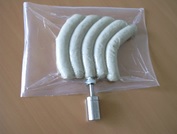
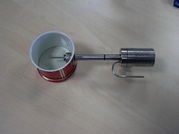
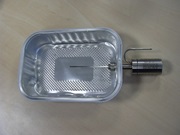
Fig. 1: The installation of sensors to determine the temperature in the product core
A direct control in each individual pack is thus eliminated as solution. In practice, the F0 values are actually determined directly with the aid of sensors only for 2-3 packs of an autoclave batch. How can you be sure, that all packs have reached the minimum F0 value, so that you have made a safe product?
Validation as Proof of a Secure Process
In order to achieve this certainty, it is necessary to determine in advance for each process which is the coldest point in the autoclave. This position is fundamentally influenced by:
• the type of autoclave and its sterilization method used (e.g. full water immersion, half water immersion, steam, steam-compressed air, spray or cascading processes with or without rotation),
• the size of autoclave,
• its media supply (steam, water, compressed air, etc.),
• the filling temperature,
• the filling line capacity,
• the capacity of the circulation pump,
• the circulation system (e.g. pipelines, PHE, filters, nozzles, trickle parts),
• the fan (in steam-compressed air processes),
• the type and size of packaging,
• and the packing scheme (incl. the spacer mats / trays selected)
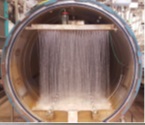
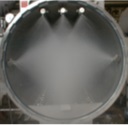
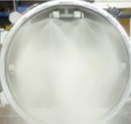
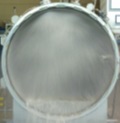
Fig. 2: Different spraying and cascading processes influence the temperature distribution in the autoclave. From left to right: simple cascade, water sprayer with simple nozzles, water sprayer with large twisted nozzles, and water sprayer with welded nozzles.
In addition, it must be checked whether the heat input into the product in the area of the coldest point is predictably the same. If this is the case and if the prescribed F0 value is demonstrably reached at the coldest point, then the process as a whole can be considered safe. The post-validation report serves as proof to customers, certification bodies (e.g. IFS, FDA) and food authorities.
